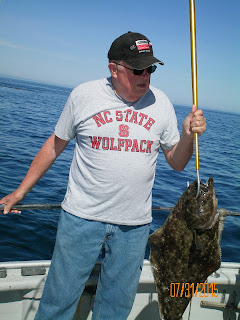Anchorage, Alaska's largest city, is embraced by
the Chugach Mountains and the waters of Cook Inlet. It’s a place where young spirits and
adventurous souls come to play. One can
step foot on a glacier, fish for king salmon, hike to a mountain vista, fly out
to Mount McKinley, and still enjoy big city life. Above is a beautiful scene along
the Seward Highway on our way to Anchorage.
On the Seward Highway is
the Alyeska Resort and tram. The tram is
a seven-minute ride to a viewing deck with breathtaking panoramic views of
mountains, hanging glaciers and wildlife. We rode the tram and enjoyed the
beautiful views. See pictures below:
Along the highway was a
business featuring chainsaw carvings. We stopped and I found a friend. We bought this little guy and named him
Happy. Take a look:
 |
| Happy |
The Alaska Wildlife
Conservation Center is also located off the Seward Highway to Anchorage. The center provides spacious enclosures and
also quality care for injured and orphaned animals in its 200-acre park. When injuries heal for adult animals, they are placed back into the wild. However, if an orphaned animal is brought in
due to the death of the mother, the orphan will remain at the center for life.
Not having learned the survival skills normally taught by the mother, the
orphans would not be able to survive in the wild.
We visited the Alaska
Native Heritage Center where native Indian culture abounds. The center is a premier cultural center which
shares the rich heritage of Alaska’s eleven major cultural groups. There, we were introduced to Native
traditions and were allowed to participate firsthand in authentic native song and
dance. We interacted with the artists while they worked on their wares.
As we toured the grounds
of the heritage center, we noticed the fire weed plants. They’ve lost all their blooms except for the
top of the plant. This is a sign to the
community that the short summer everyone has enjoyed is about to end and that
colder seasons are approaching.
































